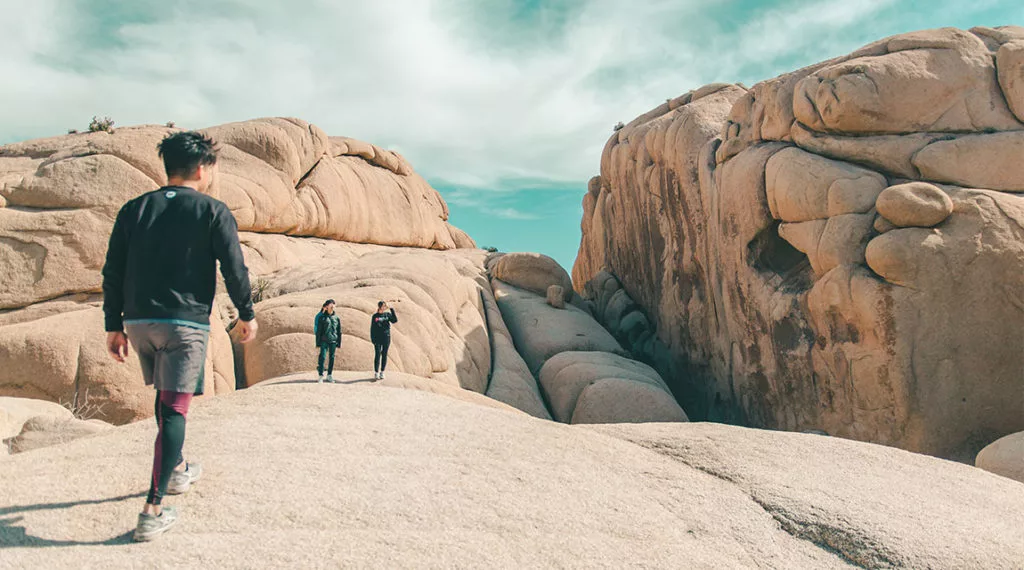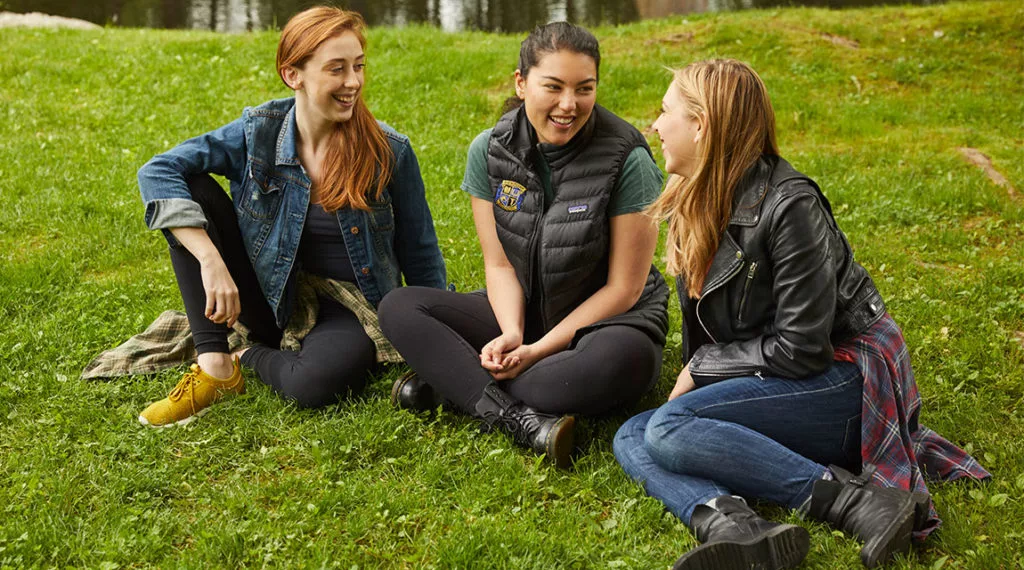Kids aren’t spending enough time in nature. As a result, children, teens, and young adults are suffering from what author Richard Louv calls “Nature Deficit Disorder.” Nature Deficit Disorder is characterized by a collection of mental health and physical symptoms that are caused or made worse by lack of time outdoors. These include anxiety, depression, ADHD, and other conditions.
This trend needs to change. Firstly, young people who learn to know and love nature are more likely to take good care of it. Therefore, they will become environmental stewards at a time when the planet needs them more than ever. Secondly, human beings need nature as much as nature needs our care. Spending time outdoors can improve mental health in a number of ways.
Key Takeaways
- The amount of time young people spend outdoors is decreasing due to more screen time.
- Being outdoors has proven positive impacts on adolescent well-being.
- There are ways to get your kids outdoors to take advantage of the mental health benefits.
- Newport Academy’s treatment model includes experiential activities in natural surroundings.
Young People Are Spending Less Time Outdoors
According to a report by the Outdoor Foundation, a non-profit organization that encourages future generations of outdoor enthusiasts, teens overall are spending less time outside. Among girls ages 13 to 17, participation in outdoor recreation is about 50 percent, the lowest rate since the first report in 2006. And overall, according to the study, the rates of time outdoors have continued to drop for both girls and boys ages 16 to 20.
Furthermore, a Nature Conservancy poll reports that fewer than 2 in 5 American youth participate in any of these activities on even a weekly basis:
- Hiking outside
- Fishing or hunting
- Spending time at a local park, creek or beach
- Visiting a national or state park outside a city
- Going to a natural area outdoors
The poll found that the key obstacles to overcome in getting youth to spend more time in nature are a lack of access, a lack of interest, and feelings of discomfort. Therefore, we need to work harder as a society to get kids outdoors.
Below are some of the reasons why being in nature is so important for teen mental health.
#1: Nature Relieves Depression and Anxiety
Many of us have personally experienced how a walk outside or a swim in the ocean can shift our mood. However, this isn’t just anecdotal. Research has repeatedly proven that time outdoors reduces levels of stress, depression, and anxiety.
In fact, being outside in nature actually lowers levels of the stress-associated chemical cortisol. In one study, university students were sent into the forest for two nights. As a result, researchers found that they had lower levels of cortisol than those who spent those two nights in the city. However, spending time outdoors even in a city environment lowers cortisol.
Many factors contribute to this effect. Our feelings of mindfulness, positivity, and wonder increase when we spend time outside. Furthermore, being surrounded by nature can inspire tranquility and positivity. Therefore, our state of mind improves.
#2: Time in Nature Inspires Awe and Gratitude
Research has found that experiencing awe, such as one might feel while immersed in a lush forest or surveying a scenic mountain landscape, can encourage more generous, positive social behaviors. That might be because nature takes us out of our own heads. Therefore, we are able to focus us on something bigger than ourselves.
Awe is also closely related to gratitude. When we notice the beauty of the world around us, we naturally feel a sense of thankfulness and appreciation. As a result, our mental health improves. Research shows that people who focus on gratitude consistently show higher well-being measures in comparison with control groups who focus on negative or neutral events.
Furthermore, nature can support a sense of purpose and spirituality. In one study, children who played outside five to 10 hours per week expressed feelings of peacefulness, awe, happiness, and a sense of belonging in the world. Moreover, researchers found that these children showed high levels of curiosity, imagination, and creativity.
That’s why Adventure Therapy is so beneficial for teens. In Adventure-Based Therapy, individuals work together to overcome a wide variety of obstacles. These might include using a compass, scaling rock walls, navigating a river, or other challenges. As they encounter opportunities to explore their own strengths and weaknesses, teens learn to take calculated risks, and push their limits in a safe and supportive environment.

#3: Being Outdoors Counteracts the Effects of Too Much Screen Time
American teens consume an average of nine hours of media a day, and 50 percent of teens feel they are addicted to their smartphones. Unfortunately, this constant use of technology has detrimental effects on teens. Therefore, teen mental health suffers.
However, nature can help. Specifically, unplugged time in nature has been shown to regulate mood disturbance and nervous system arousal caused by too much time in front of screens. Moreover, being in nature restores mental energy that’s been sapped by technology. Furthermore, one study found that young people’s mental energy bounced back even when they simply looked at pictures of nature.
“As the young spend less and less of their lives in natural surroundings, their senses narrow, and this reduces the richness of human experience.”
—Richard Louv, author of “Last Child in the Woods” and cofounder of the Children & Nature Network
#4: Natural Relief from the Symptoms of ADHD and Mental Fatigue
Research suggests that time in nature (also known as “green spaces”) can significantly reduce ADHD symptoms in children. One study tested children with ADHD in a controlled setting after they had walked in one of three environments: a park, a neighborhood, and a quiet downtown area. Each area had a different level of greenery. The results confirmed that the children who spent time in the greenest settings functioned better.
Moreover, nature can heal the stress and fatigue associated with what scientists call “directed attention.” According to the Attention Restoration Theory, being in cities requires directed attention. Specifically, we need to ignore distractions in order to function in urban environments. As a result, our brains are exhausted.
Research validates this understanding. A study examined the relationship between university students’ levels of attention fatigue and the view from their dorm room windows. Subsequently, researchers found that natural views were associated with better performance on attention measures. Moreover, another study found that college students did a much better job repeating sequences of numbers back to the researchers after taking a walk in nature.

#5: Nature Builds Teen Resilience and Confidence
There’s a big difference between healthy and unhealthy risk-taking behaviors. Outdoor activities provide opportunities for teens to take calculated risks and push their limits. Moreover, this type of risk-taking develops resilience and self-confidence, as opposed to risky behaviors associated with substance use.
A 2015 study published in the International Journal of Environmental Research and Public Health showed that kids who explored nature and took part in “risky outdoor play” such as climbing and jumping, displayed improvements in social skills, resilience, and creativity.
“In Adventure Therapy programs, teens can immerse themselves in the experience without overanalyzing it. When kids recognize the steps they’ve taken toward healing, they can apply the learning in every aspect of life.”
Tim Walsh, Newport consultant and founder of Adventure Recovery
Outdoor Activities Get Teens Moving
Furthermore, being in nature usually leads to an increase in physical activity. Therefore, teen mental health improves. Regular exercise makes a significant positive difference in terms of teen depression and anxiety. Many studies demonstrate how physical activity counteracts depressive symptoms in both teens and adults.
Exercise positively impacts levels of serotonin, a chemical that helps regulate mental health. Additionally, physical activity also stimulates the neurotransmitter norepinephrine, which improves mood. In fact, exercise can even be as effective as antidepressants.
Read “Teens and Sports: The Exercise-Mental Health Link.”
Six Ways for Parents to Get Teens Outdoors
Obviously, time in nature has multiple benefits for teens. However, it’s not always easy to get children and adolescents outside, especially given the draw of technology. If you’re having trouble getting your teen out in nature, here are some approaches to try.
1. Encourage them to bring friends.
Most teens love to be with a best friend or a group of friends. Everything’s more fun with a friend! Therefore, bring your teen’s friends along for a hike, a swim at the local watering hole, or a picnic at the lake. They’ll be more likely to feel positive about the outing.
2. Let them choose where they want to go.
Rather than imposing a destination on your teen, give them the reins. Let your teen decide where you’re going and plan the trip. That way, they’ll be more invested and motivated.

3. Do something unusual.
If the backyard or park isn’t enough to call to your teen, go a bit farther afield. Specifically, make it an exciting challenge—climb a mountain, go cross-country skiing, or do a ropes course as a family.
4. Send them on a guided wilderness adventure.
If your teen loves excitement and meeting new people, an outdoor excursion with peers and trained guides might be the best way to give them a concentrated dose of nature. Many organizations and camps offer teen kayaking trips, rafting adventures, camping trips, and more
5. Make it creative.
Is your teen musical or artistic? Nature can serve as an amazing inspiration—even in your own backyard (if you have one) or a local park. Thus, everyone in the family can bring along their favorite tools for getting creative—a journal, a sketchbook, an instrument, even painting supplies.
6. Support your teen to be a nature mentor to younger children.
Teens are often drawn toward sharing and teaching what they know and enjoy. Therefore, support them in finding opportunities to share the benefits of nature with children. For example, they might want to take a younger sibling for a weekly nature walk, volunteer for an outdoor organization, or work as a camp counselor. That way, your teen gets outside more, and they’re also making a positive difference for other young people.
In conclusion, the benefits of being outdoors are clear. Therefore, we all need to get outside more in order to experience this powerful impact on our mental health.
How Treatment at Newport Academy Integrates Time Outdoors
At Newport Academy, each teen’s tailored treatment plan includes clinical therapy with our individual and family therapists, as well as experiential activities in the great outdoors, guided by practitioners with years of training and experience.
Learn more about Newport Academy’s treatment approach, which includes outdoor Adventure Therapy, Equine-Assisted Therapy, group activities in nature, and more (depending on program location). We also provide specialized treatment for young adults through Newport Institute, serving ages 18–35.
If you or someone you love is in need of support, contact us. Our team is here to help.
Sources
JAMA Pediatr. 2023; 177(3): 303–310.
Int J Environ Res Public Health. 2015 Dec; 12(12): 15860–15874.
J Environmental Psych. 2015 Jun; 42: 182–189.
Environ Health Prev Med. 2010 Jan; 15(1): 18–26.
J Research Pers. 2008;42(2):854–871.
J Pers Social Psych. 2003;84:377–389.






